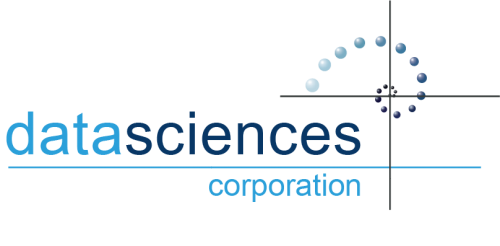Digital twins feel thoroughly futuristic. The concept conjures virtual copies of advanced aircraft engines, cutting-edge manufacturing plants or tomorrow’s smart cities.
The digital twin is a living and evolving copy of tangible assets. Yet thanks to advances in the underlying technologies and more accessible computing resources, we can apply digital twins to a wider range of use cases, such as managing IT estates.
The sprawling and complicated layers of today’s physical technology infrastructure are a perfect opportunity for digital twins to show what they can deliver today.
“Every IT manager wishes they had a crystal ball,” says Werner Coetzee, Business Development Executive at Data Sciences Corporation. “IT systems are complicated, with a lot of variables. You can monitor things in real-time, have historic reports and pull all those things together. But it’s very, very difficult to spread that across multiple technologies and get cohesiveness. Digital twins work very well for such complex environments.”
A copy to reduce risk
Digital twins are helping IT teams understand the sprawling architecture that power today’s technological world, such as servers, networks and their appliances.
This idea has gained significant traction in the cyber security world. As companies started using digital twins to model systems such as server farms and cloud implementations, security teams are using these simulations to test security changes. While we visualise a digital twin as a copy of a specific piece of equipment, it can represent more sprawling assets, such as networks, servers and even cloud deployments.
At the entry level, digital twins are handy for monitoring and they are starting to prove themselves for more complex uses, says Coetzee: “Teams already document much of an estate, but that ends up in spreadsheets and manuals. Digital twins are becoming the living, breathing version of that process that can mature to do even more. They are helping IT teams with preventative measures; not just maintenance, but also security, efficiencies and such.”
It can be relatively easy to copy software environments for testing purposes. But duplicating hardware estates is an entirely different matter – a long-standing problem for IT managers and architects. Digital twins offer a solution, and the standard modern enterprise already has several foundation blocks to create virtual copies of their physical systems.
How to make a twin
A digital twin for IT estates is not an obscure idea, so why don’t we hear more about it? Blame the hype behind digital twins, which sound very futuristic and unattainable to most enterprises. But we have it wrong, says Coetzee: “There’s the preconception that a digital twin is only a digital twin once it’s fully autonomous, running simulations and feeding data back into the system, giving us predictable areas and stuff like that. That is the future goal, but that isn’t where they start. There are several maturity stages for digital twins.”
Level one is a descriptive representation of the asset, such as a network. Companies already have performance and schematic data for such assets, which a level one digital twin brings together in a visual representation. Level two is more informative, adding sensory and operational data to establish an evolving copy of the asset in real-time. Level three starts to deliver predictive qualities and insights, and level four is the final stage of high-level automation and what some dub the “frictionless enterprise”.
Many large organisations have the capacity to realise stages one and two, says Coetzee: “They might actually already be utilising some form of digital twin concept within their organisation, especially in the IT field. They can get the fundamentals in place and then start maturing those levels so that those insights can become a more fundamental part of organisational decision-making.”
Get real value
Where should companies start this process? Digital twins require some infrastructure and skills investments. Coetzee cautions against a big bang approach. They should focus on specific use cases where they can clearly define the value they expect.
Digital twins can deliver fantastic value through clarity and reduced risk, but “before you make any investment, really understand the reason why you’re doing this and the type of value that you want to show the organisation. It could be a system, processes, specific assets. All that is possible.”
When we hear about digital twins, we think of large industrial plants or maintaining heavy machinery. Yet they are incredibly well-suited to grasp, study and test the challenges and opportunities of a complex IT environment – and enterprises already have the data to make their first moves towards this capability.



